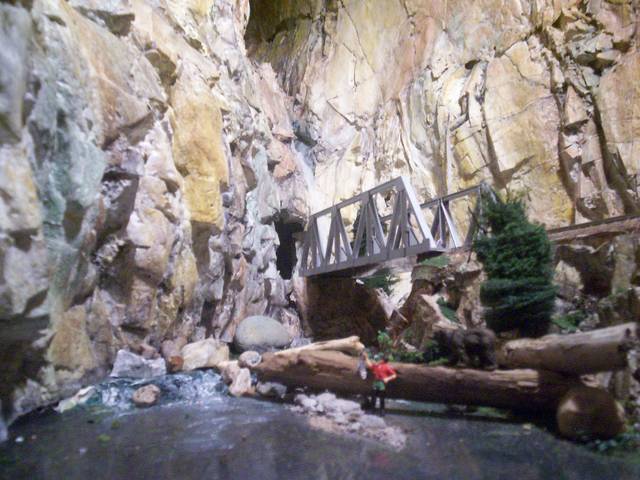Izzy,
I’ve used both the Woodland Scenics Realistic Water and Acrylic Gloss GEL (NOT medium, but any art supply store that sells acrylic paints will probably have both). I find that for deep water (lakes and ponds), the Realistic Water is hard to beat, but anywhere you want ripples (rapids, swift streams, waterfalls), gloss gel is the champ because it imparts a fuzzy, not quite transparent look. It also takes paint very well.
Gloss medium, being thin, runs too much to make convincing ripples. Gloss gel (I use Liquitex, but I’d imagine all brands are fairly similar), on the other hand, stays where you put it (it’s about the consistency of paste). Use an old brush, because you get the best results by smashing the brush down and pulling it up again, which tends to be rather hard on the brush.
I use Polycrylic on my floors and furniture. I’ve never tried to model water with it but it should work just fine, come to think of it. My hardwood floors DO look wet when I apply a new coat.
I should note at this point that the REAL key to making good looking water isn’t the polymer that’s poured on top, it’s doing a top-notch job of modeling the sand, mud, rocks, weeds, logs and other characteristics of a real stream. And there, alas, my modeling skill fails me somewhat.
Oh yeah, a word of warning about Realistic Water. It’s self healing, which means it never really hardens. My son set a cast resin flat car load in the middle of his lake (whether intentionally or not, I don’t know), but I came back 2 days later to find it embedded in the surface. When I pulled it out, the lake had a lovely square imprint in the middle of it. [:(]








